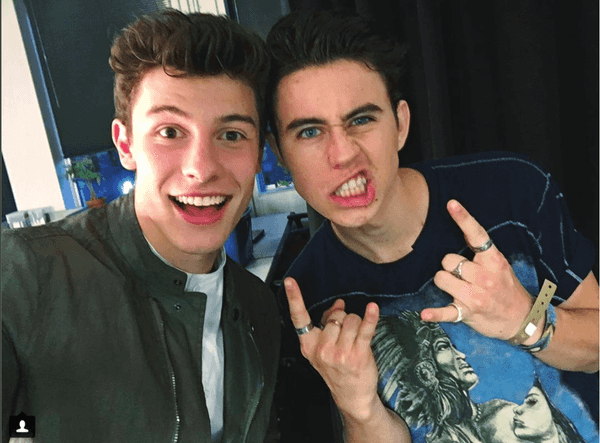Hello again. I am writing to you from yet another bus – I think this might become a theme for my blogs on this trip. The Bio FSP is certainly a rigorous program, and we barely have enough time to sleep and shower when on site, let alone call home or write. Not that it’s not fun – the “busy” time is excessively stimulating – which is my lead-in to recounting my week at Palo Verde National Park. We arrived off the bus on January 7th (when I last wrote), and immediately ate a snack of cookies and home-made chips cooked up by Romelio, who we’d come to know as the chef and wood-carving god of the station. Gustavo, the station director, then gave us a short orientation mostly consisting of safety tips (check your shoes for scorpions, walk with a light at night to avoid poisonous snakes – the usual in Costa Rica). After a period to split up into rooms (with 3 bunk beds in each), we ate dinner and finally got our orientation to the Costa Rica trip as a whole courtesy of Matt, the director of the program. It was here we officially established what the country of Costa Rica actually looks like, which I think will prove useful information for the next few weeks here. It was also here that we began to use our rite-in-the-rain field notebooks to take down everything, from discussions about tropical biodiversity to descriptions of the cane toad (Bufo marinus) Matt unexpectedly released into the classroom. We went to bed exhausted that night, another theme for this trip, I’m finding.
The next day we woke up in time for breakfast at 6:30am, a very different schedule from usual college life. After rice and beans and fresh-squeezed juices, we headed out on an all-morning (all-consuming) hike. I sketched birds in my notebook (as well as I could) and wrote down potential research questions, feeling like a true naturalist (though I’m still far from it). The area around Palo Verde is a dry tropical rainforest. Many of the trees are deciduous, and drop their leaves (called senescence), which makes the forest look like home in the northeastern U.S. than one would think. The park also has a boardwalk that looks over wetlands preserved for the many species that live there. It’s lush and green, an ever-shifting landscape, I would find, that glows orange at sunrise and purple at sunset.
During our hike around the area, we scribbled down species names in our notebooks and took mini lectures from our professors and TAs. One that particularly fascinated me was the question of a tree in the family Moraceae, which has tall roots sticking out like buttresses. The question was posed to us: Why not have a cylindrical trunk like other trees? These are the kinds of questions FSP likes to throw at you. I’ll leave it to you to ponder, as I have been for the past week.
After lunch, we received a more formal presentation from Gustavo on the history of Palo Verde, which has been a national park for decades, and a RAMSAR site since 1991 (which basically means it’s considered an important wetland worth conserving). Though the lecture was interesting, we found ourselves falling asleep in a 2pm slump for practically its entirety. However, Gustavo then offered to walk us through the wetlands. Those who were willing strapped on shoes we hoped wouldn’t be destroyed and headed down. We identified plants and plucked our sneakers from mud holes that would seal around our feet. It was exhilarating to see the world up close, to feel the reeds between my fingers. We thoroughly enjoyed getting dirty in nature, despite the following laundry load. We got our first official faculty lecture from Mark, another professor, on primates and their social structure and intelligence. The next day we would see two of the species he mentioned: white-faced capuchins and howler monkeys, as if Mark had beckoned them himself. Over the course of the next few days we would go on hikes and develop our project ideas. By Sunday night, I knew I wanted to do an observational study on the marsh, just to immerse myself in the atmosphere. By Monday, I was in a group with two other students to look at behaviors in Northern Jacanas (Jacana spinosa), and we had our first data set by Tuesday. We took a quick detour Wednesday morning for a boat tour on the Tempisque river, where we noted countless crocodiles and iguanas, and puttered off the coast of bird island for sightings of wood storks, cormorants, and roseate spoonbills (probably my favorite bird species at this point. They’re just what they sound like – pink-feathered, with a bill like a bell curve that they saw through the water to suck up shrimp). On Wednesday night, after more lectures from fellow students and gracious scientists around the station, my group had compiled all our data, and had begun a literature search and our statistical analysis. We continued to develop our work over the course of Thursday: the final and ultimate day. We had an “animal practicum” at 4pm, essentially a hike-turned-quiz in which the TAs tested our knowledge of the animals we had seen and learned – everything from peccaries (essentially wild pigs) to termites. At 7pm, each group gave presentations on our research in a “symposium,” the culmination of the work of only a few days (excepting the papers we’ll have to write over the next few weeks). My group’s basic findings were this: when looking at the behaviors of Northern Jacanas, those with juveniles spent more time “vigilant” (looking around) and “walking,” while individuals without juveniles spent more time on social interactions such as flights and “wing ups,” in which birds show the undersides of their wings to each other. Intellectually this makes sense: adults around young spend more time looking for predators in order to protect chicks, and adults not burdened by young can spend more time and energy socially, potentially with the goal to reproduce. Because that’s another fascinating thing about Northern Jacanas – they’re one of the few polyandrous species in the world (in which one female mates with multiple males). This just makes our result all the more interesting, because fathers taking care of juveniles will alter their behavior to protect them, just like mothers in other species.
Three other groups presented on their studies, one of which looked at shells and limestone, another trees and sugar content, and a third ant lion predation methods (you may have never heard of them but you’ve likely seen them – ant lions are a fascinating species). Then, we packed up our stuff to hit the road at 7am this morning. Goodbye Palo Verde and its rare birds. Hello Santa Rosa and its sea turtle-filled beaches.





















